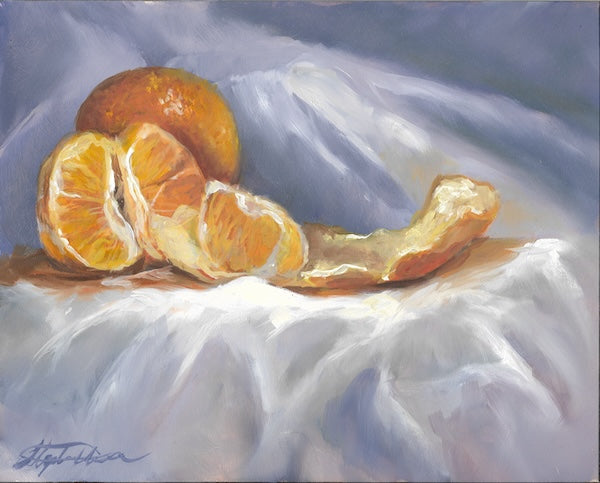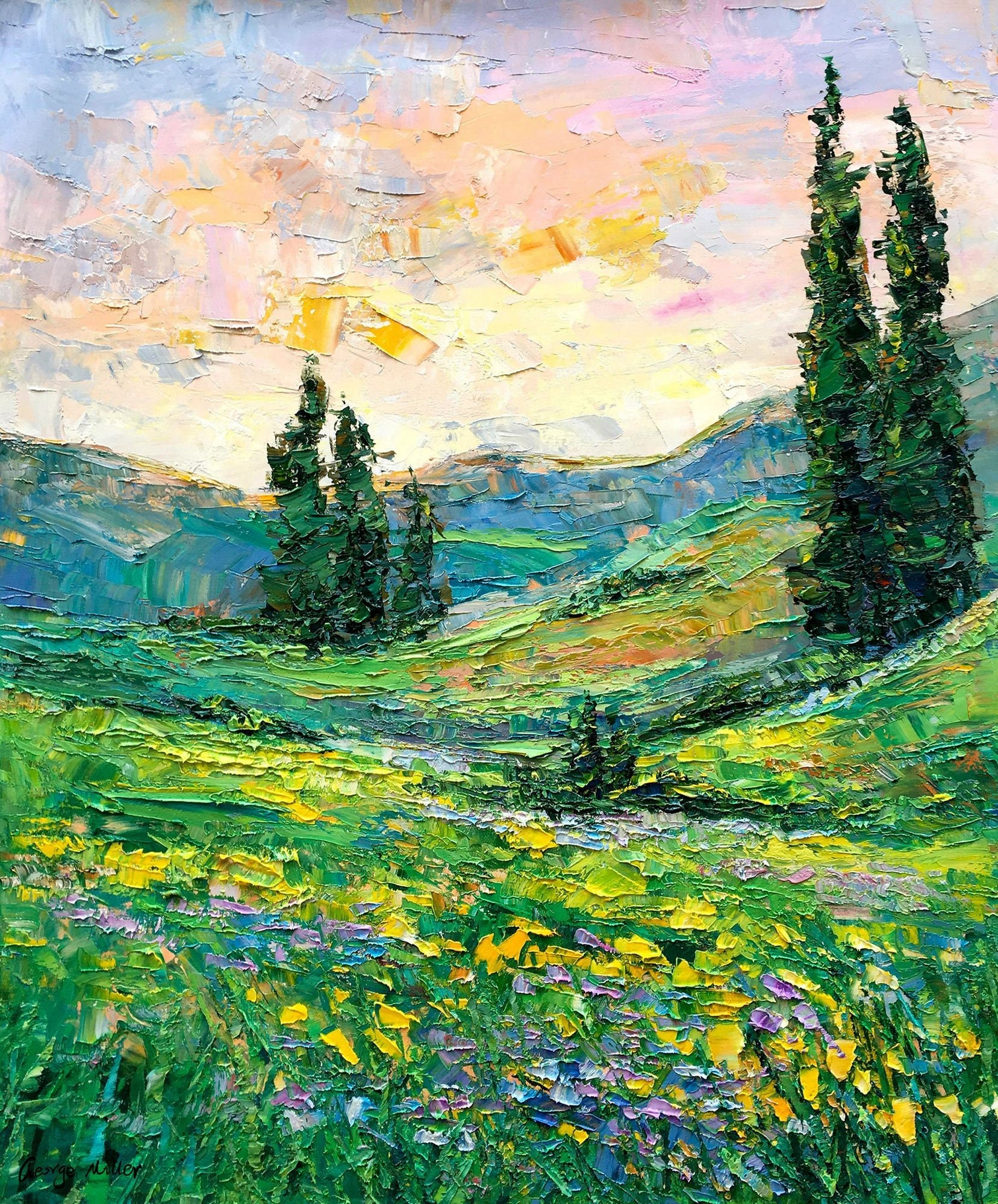Discover Old and Classic Oil Paintings for Sale Online
Discover Old and Classic Oil Paintings for Sale Online
Blog Article
Exploring Everything About Oil Paints: A Guide to Comprehending Their Appeal and Worth
Oil paintings have actually captivated audiences for centuries, using a glance into the creative proficiency of various periods. Their abundant background is linked with cutting-edge methods and extensive emotional expression. Comprehending the materials and methods behind these artworks can enhance appreciation. Furthermore, the market for oil paints provides possibilities for collectors and financiers alike. As one discovers this remarkable globe, the concern develops: what makes an oil paint really beneficial?
The Background of Oil Paint: A Journey With Time
Oil painting has roots that date back to ancient times, it genuinely flourished throughout the Renaissance, when musicians found its flexibility and abundant shade potential. Early examples can be mapped to the 7th century, with strategies developing notably throughout cultures. The medium came to be popular in Northern Europe in the 15th century, especially with the works of artists like Jan van Eyck, that pioneered its use for in-depth realistic look and vivid tones. This duration marked a departure from tempera paints, enabling better depth and structure. As oil paint spread, it affected many artists, leading to masterpieces by prominent numbers such as Leonardo da Vinci and Rembrandt. The medium's tradition continues, forming the art world well into modern-day times.
Comprehending Oil Repaints: Materials and Techniques
As musicians explore the world of oil paints, they experience a varied range of materials and strategies that specify this tool. The primary components of oil paint consist of pigments, which supply shade, and drying out oils, such as linseed, that bind the pigments and promote application. Various ingredients can customize the paint's structure and drying time, boosting flexibility. Methods like glazing, where clear layers are built up, and impasto, which involves using thick paint, permit different visual effects. Furthermore, using brushes, scheme blades, and also fingers can develop special appearances and finishes. Comprehending these techniques and materials enables artists to totally reveal their imagination and attain the preferred impact in their artwork.
The Function of Color in Oil Paints
Shade plays a crucial function in oil paintings, influencing both aesthetic allure and psychological vibration. Recognizing shade concept essentials, including the partnerships between shades, can boost an artist's capability to communicate state of mind and ambience. In addition, understanding color mixing strategies permits higher depth and richness in a painting's scheme.

Color Concept Essential
Understanding shade concept is vital for artists collaborating with oil paints, as it forms the foundation for creating unified and aesthetically engaging compositions. Shade theory incorporates the research study of just how colors engage, the color wheel, and the relationships in between key, second, and tertiary colors. Artists use corresponding shades to enhance contrasts and develop focal points, while comparable shades promote unity and cohesiveness within a piece. Additionally, the ideas of cozy and great colors affect the perception of depth and space in a paint. Comprehending these principles permits artists to adjust color successfully, directing the audience's eye and interacting their desired message. Proficiency of color concept eventually enriches a musician's ability to communicate feelings and ideas with their job.
Emotional Impact of Color
The psychological effect of color in oil paintings plays a critical function in exactly how visitors regard and attach with artwork. Colors evoke certain sensations and state of minds, influencing the audience's mood. Warm colors like reds and oranges can produce a feeling of warmth and energy, while great tones such as blues and greens usually stimulate calmness or self-questioning. Artists tactically choose color schemes to improve narrative components, guiding the target market's emotional journey. The saturation and contrast of colors even more intensify these impacts, drawing interest and developing emphasis. Ultimately, the interplay of shades in oil paints not only enhances their aesthetic appeal yet also functions as a powerful tool for emotional expression, improving the customer's experience and analysis.
Shade Combining Techniques
While lots of facets of oil paint add to the overall make-up, understanding shade blending techniques is necessary for accomplishing wanted effects and depth. Shade mixing can be approached with different techniques, consisting of the subtractive and additive procedures. Additive blending entails incorporating shades of light, while subtractive mixing relies upon pigments, where shades mix to produce new shades. Artists usually utilize a restricted palette to create unified jobs, recognizing the connections in between primary, second, and tertiary shades. Methods such as glazing and scumbling even more improve deepness and brightness. By skillfully blending shades, an artist can evoke emotions, create focal points, and achieve a feeling of realistic look, inevitably boosting the paint's psychological and visual impact.
Famous Oil Painters and Their Iconic Works

Famed for their mastery of color and strategy, oil painters have actually produced a few of one of the most popular artworks in history. Prominent musicians like Vincent van Gogh mesmerized target markets with his emotive brushwork in "Starry Night," while Claude Monet's "Impression, Sunup" prepared for Impressionism. Leonardo da Vinci's "Mona Lisa" continues to be an enduring icon of artistic brilliant, showcasing his ability in recording human expression. On the other hand, Rembrandt's "The Night Watch" shows his cutting-edge use light and darkness. Other noteworthy numbers consist of Pablo Picasso, that reinvented modern art with his bold trial and error in works like "Les Demoiselles d'Avignon," and Georgia O'Keeffe, whose lively depictions of blossoms and landscapes assisted define American modernism. Each artist's special design contributed substantially to the oil paint landscape.
Exactly how to Examine the Quality of an Oil Paint
Assessing the top quality of an oil paint involves a cautious analysis of workmanship techniques, in addition to an evaluation of shade and structure. Observing brushwork, layering, and the application of paint can disclose the artist's skill degree. Furthermore, the interaction of shades and the overall setup of elements add significantly to the painting's aesthetic worth.
Evaluating Workmanship Techniques
A careful evaluation of craftsmanship strategies is essential for determining the quality of an oil painting. Critics ought to initially check out the application of paint; thick, textured brushstrokes might recommend a knowledgeable hand, while excessively uniform applications might suggest an absence of depth. oil paintings for sale. The layering strategy is additionally important; the presence of glazes and differed density can improve luminance and complexity. Additionally, the high quality of the materials utilized, such as the canvas and pigments, plays a significant role in toughness and general aesthetic. Focus to detail in aspects like edges and shifts in between colors mirrors the artist's dedication to their craft. Ultimately, these techniques add to the paint's psychological effect and market worth, offering as indications of the musician's skill and intent
Assessing Color and Structure
While reviewing the quality of an oil painting, one have to concentrate on the interplay of color and make-up, as these elements are fundamental to the art work's overall impact. Shade choices can evoke emotions and establish mood; consequently, the artist's combination must be examined for harmony and comparison. A well-balanced composition directs the viewer's eye and creates a feeling of unity. Artists often use strategies like the regulation of thirds or leading lines to enhance aesthetic rate of interest. Additionally, using light and darkness can include depth, boosting the three-dimensionality of the painting. Ultimately, an effective oil painting marries color and composition, involving the viewer and welcoming a deeper appreciation of the artist's vision and strategy.
Taking care of and Preserving Oil Paintings
Appropriate care and preservation of oil paints is vital for keeping their stability and longevity. To protect these art work, it is essential to present them far from straight sunlight, which can cause fading and discoloration. Keeping a secure environment with regulated temperature and humidity more help in stopping damages. Cleaning up should be done delicately using a soft, dry cloth, preventing any kind of severe chemicals that can hurt the paint or varnish. Normal evaluations for indicators of wear and tear, such as flaking or fracturing, are recommended. When delivering or saving oil paints, correct cushioning and framing are essential to prevent physical damage. Ultimately, thorough treatment adds to the visual allure and value of oil paints gradually.
The Marketplace for Oil Paints: Investing and gathering
Recognizing the market dynamics for oil paints is vital for capitalists and enthusiasts alike. The value of these art work is affected by various factors, consisting of the musician's track record, historic importance, and present fads. Collectors frequently seek pieces that resonate directly while considering possible admiration in value. Auctions and galleries act as main venues for trading, with rates fluctuating based upon need and rarity. Buying oil paintings requires research into the marketplace, as well as an understanding of authenticity and provenance. Additionally, arising artists may provide opportunities for significant returns, while established names can regulate high prices. Generally, a tactical approach to collecting can generate both visual satisfaction and economic incentives.

Regularly Asked Questions
What Are the Ecological Effects of Oil Paint Materials?
The environmental influences of oil paint materials include the release of unstable organic substances (VOCs), harmful waste generation, and source removal for pigments. These aspects add to air pollution and environmental degradation, increasing worries amongst eco mindful musicians and customers.
How Do Different Canvases Affect Oil Paint Results?
Various canvases affect oil painting results significantly. Structure, absorbency, and surface high quality can alter paint application, drying times, and shade vibrancy. Artists frequently choose certain canvases to attain preferred results and boost their artistic expression.
Can Oil Paintings Be Recovered if Harmed?
If harmed, Oil paints can certainly be brought back. Specialist conservators use various strategies to fix splits, clean surface areas, and address discoloration, making certain that the artwork retains its initial beauty and value for future generations.
What Are the Indications of an Initial Oil Painting?
The indications of an original oil painting consist of noticeable brush strokes, texture variations, and an uneven canvas weave (oil paintings for sale). Furthermore, credibility might be confirmed with provenance, trademarks, and the visibility of a varnish layer one-of-a-kind to oil tools
Just How Has Modern Technology Influenced Modern Oil Painting Techniques?
Technology has actually substantially influenced modern oil painting techniques by presenting digital tools for planning, improved products for structure and longevity, and on-line platforms for selling and sharing art, consequently expanding artists' imaginative possibilities and target market get to. Oil paint has roots that date back to ancient times, it really prospered during the Renaissance, when artists discovered its adaptability and abundant color potential. The emotional effect of color in oil paintings plays a critical duty in exactly how audiences perceive and connect with art work. While numerous facets of oil paint get more info add to the general make-up, understanding shade mixing techniques is crucial for accomplishing preferred results and depth. Reviewing the high quality of an oil paint involves a cautious evaluation of craftsmanship methods, as well as an analysis of shade and make-up. While examining the high quality of an oil painting, one have to concentrate on the interaction of color and composition, as these aspects are essential to the artwork's total effect.
Report this page